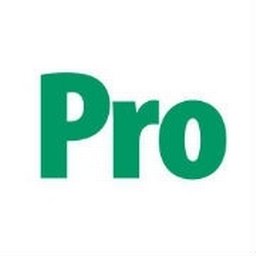FIND_THE_RIGHTJOB.
CONTROLS MAINTENANCE TECHNICIAN 3rd SHIFT
Grand Rapids, United States
The Controls Maintenance Technician 3rd Shift works in with the Process Services Maintenance Department, troubleshooting and validating the machine processes of production, self-manufactured and purchased equipment in an exemplary manner according to the company quality policies.
- Equipment Maintenance
- Use CAD and PLC programming software to debug, power-up, and validate machines with the appropriate build and electrical teams.
- Assist maintenance with all electrical/hydraulic, pneumatic, and programming problems. Train and guide maintenance technicians on control applications and other pertinent topics
- Ensure equipment is designed and programmed to Progressive Surfaces build specifications using standard techniques and approach while staying current with any new hardware/software that will be used in our line of work.
- Analyze all hardware and software used in the department and ensure it is up to date. Upgrade equipment when needed and recommend new equipment.
- Use the bill of material along with previous experience and history to recommend spare parts for all new equipment build and/or for purchased equipment based on the OEM bill of material and on our history/experience.
- Ensure that all work is retained on the Progressive Surface network under the pre-determined file location(s).
- If any changes are made to files, machines, cad, or programs ensure they are communicated to Progressive Surface build teams, appropriate departments and in Progressive Surface network as well as entering in redbook as required.
- Robot PM / trouble shoot robots and machines.
- Inspects operating machines and equipment for conformance with operational standards.
- Breakdowns and Repairs – responds in a timely manner to machine failure coordinating resources to expedite repair and return to service.
- Predictive and Preventative Maintenance - Maintains predictive/preventive maintenance programs for all production equipment
- Develops and maintains a system to improve overall machine availability by utilizing TPM or OEE methods and tools
- New equipment installation or rearrangement – coordinates new equipment installation or existing equipment rearrangement with manufacturing team and operations resources to efficiently complete moves and getting the machines back to service.
- Troubleshooting
- Troubleshoot programs for a number of different machine controllers, servo systems, motion controllers, robotics, HMI’s, and related components in a timely and efficient manner.
- Work with outside contractors or OEM’s as needed to troubleshoot our equipment. Use the internet and other tools available to you to ensure we have equipment up and running in a timely manner.
- Troubleshoot all new motors and drivers to ensure compatibility prior to installation.
- Other
- Suggests changes in working conditions and use of equipment to increase efficiency.
- Takes a proactive approach in both safety and environmental issues.
MISCELLANEOUS RESPONSIBILITIES
1. Performs other work-related duties as assigned.
Requirements:
To perform this job successfully, an individual must be able to perform each essential duty satisfactorily. The requirements listed below are representative of the knowledge, skill, and/or ability required. Reasonable accommodations may be made to enable individuals with disabilities to perform the essential functions.
- Post High School Education Desirable, college or trade school.
- Good verbal communication skills.
- Good record keeping ability.
- Minimum 5 years of machine maintenance experience
- Minimum of one year of experience with controls
- Experience with electrical troubleshooting and performing electrical maintenance on equipment, the ability to read, follow and understand electrical
- Mechanical, hydraulic and pneumatic drawings, blueprints, schematics, code requirements, service manuals and manufacturers’ specifications, experience using CAD and PLC programming and troubleshooting and the ability to read and understand advanced electrical prints
- Schematics as needed to facilitate complex repairs or installation of equipment, knowledge in all Allen Bradley PLC’s, Rockwell programming software (including RSLogix 500, RSLogix 5, RSLogix 5000, and Panelbuild32), as well as servo systems, variable speed drive controllers, and both AC and DC motors
- Proficient in the use, programming, and troubleshooting of industrial arm robots, such as Fanuc and ABB
- Good mechanical, electrical, and software aptitude.
- Ability to read and interpret documents such as safety rules, operating and maintenance instructions, and procedure manuals.
- Ability to write routine reports and correspondence. Ability to speak effectively before groups of customers or employees of organization.
- Ability to apply common sense understanding to carry out instructions furnished in written, oral, or diagram form. Ability to deal with problems involving several concrete variables in standardized situations.
PHYSICAL DEMANDS The physical demands described here are representative of those that must be met by an employee to successfully perform the essential functions of this job. Reasonable accommodations may be made to enable individuals with disabilities to perform the essential functions.
1. While performing the duties of this job, the employee is regularly required to stand; walk; use hands/finger to handle, or feel; reach with hands and arms; climb or balance; stoop, kneel, crouch, or crawl; and talk or hear.
2. The employee must occasionally lift and/or move up to 50 pounds.
3. Specific vision abilities required by this job include close vision, distance vision, color vision, peripheral vision, depth perception, and ability to adjust focus.
WORK ENVIRONMENT The work environment characteristics described here are representative of those an employee encounters while performing the essential functions of this job. Reasonable accommodations may be made to enable individuals with disabilities to perform the essential functions.
1. While performing the duties of this job, the employee is regularly exposed to moving mechanical parts; high, precarious places; fumes or airborne particles; toxic or caustic chemicals; outside weather conditions; risk of electrical shock; and vibration.
2. The noise level in the work environment is usually loud.
Similar jobs
No similar jobs found
© 2025 Qureos. All rights reserved.
